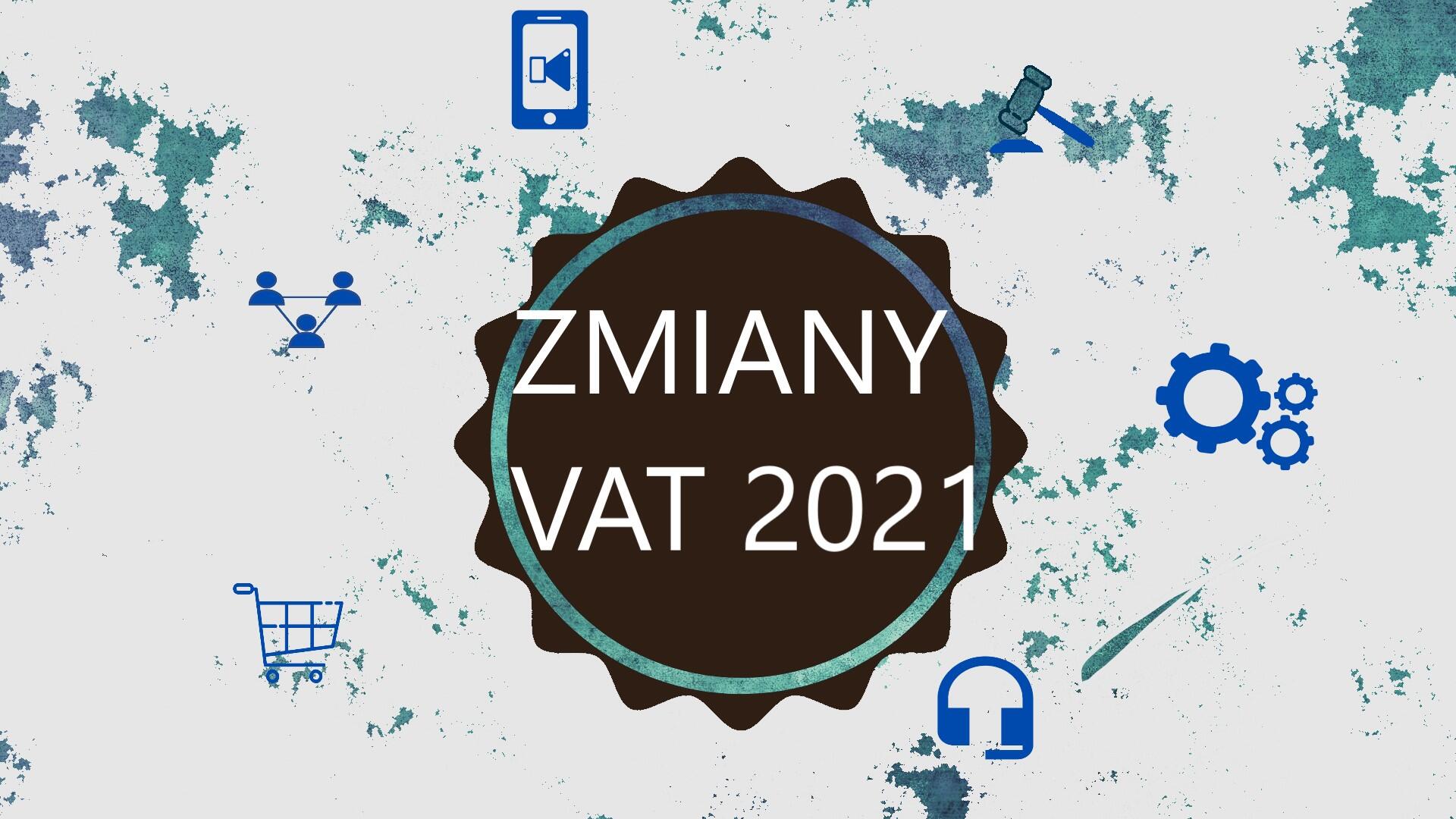From
1 January 2021 Member States of the European Union (EU) introduce extensive reforms on compulsory
compliance with VAT for
B2C e-commerce sellers and sales platforms.
The key reform will mean that some sellers will be able to report all their sales throughout the EU based on one VAT granted in their home country instead of multiple VAT registrations across the EU. The purpose of this process is to stimulate cross-border online trade and promote trade in the EU’s digital single market. The changes also aim to eliminate the persistent gap in fraud related to unpaid VAT in e-commerce. This gap amounts to EUR 5 billion. VAT will be charged
at the actual place of activity of the sellers. This entry provides an overview of the most important reforms and their impact on sellers and markets. This is based on the three main reforms planned for 2021.
1.
One EU VAT declaration for eCommerce
When the reforms come into force, there will be rules on “distance selling thresholds” that will be withdrawn. This change will be accompanied by one EU VAT declaration – One Stop Shop (“OSS”). Sellers who will ship goods from their country to customers throughout the EU will be able to opt to use OSS to report all sales throughout the EU. The obligation to register VAT in all countries will be lifted.
No action required at this time. After 2021, some eCommerce sellers will be able to close their existing registrations in EU countries to perform a quarterly return of OSS to the tax authority in their home country. Non-EU sellers will also be able to use OSS. You will have to pay VAT in your home country.
Note: Sellers with inventory in other EU countries will still need to remain registered in other countries. This includes sellers using Amazon (FBA) shipments. There will be exceptions for sellers benefiting from market facilities.
2.
Closing VAT import exemption – “Green Channel” import
From January 2021, VAT exemption will be EUR 22. Small parcels imported into the EU for delivery to consumers will be withdrawn. Unfortunately, it was seriously abused by many sellers, by mistake or intentionally, which reduced the declared value of imported goods to avoid VAT.
Instead, you will have to charge VAT at the time of sale for the transaction up to € 150. This VAT will then be declared and paid via the “Import One Stop Shop” (IOSS). Thanks (IOSS). Customs clearance will be faster, easier and more effective.
From 2021, EU sellers will cease to be at a price disadvantage because non-EU sellers will have to charge VAT on all imported goods and register with IOSS in only one EU country to declare VAT on the imports concerned , for shipments under EUR 150. This is called “Non-EU program”. Non-EU sellers will be required to have at least one regular VAT registration in one Member State. If any of the sellers chooses not to use IOSS, then the customer will be forced to pay for the delivery or customs agent to get access to the products ordered.
3.
Markets will become a VAT collector
The reforms by 2021 will require markets that facilitate cross-border sales to consumers through third parties to become a “recognized seller” in some cases. This will be the so-called full responsibility system. The VAT liability on the market will include product liability. The EU has defined “facilitation” based on an “electronic platform that will be designed to support sellers and consumers who conclude a contract for the supply of goods on a cross-border basis.” This solution is intended to facilitate the sale of B2C for imports with a cross-border transaction not exceeding € 150; and for cross-border distance sales at any value for non-EU sellers. However, the market may opt out of this program and VAT obligations may transfer to the seller courier.
After 2021, the markets will become responsible for charging and collecting VAT on transactions from a recognized seller. However, the market will not take responsibility for the product or regulatory obligations. At the time of sale, the market will charge the customer VAT instead of the seller for imported goods below € 150. In this case, VAT will have to be declared. Both EU and non-EU sellers will benefit from reduced VAT obligations and will be able to sign out in some EU countries.
One EU VAT declaration for eCommerce
The key issue for EU VAT eCommerce in 2021 is the introduction of One-Stop-Shop (“OSS”), i.e. one EU VAT declaration.
From January 2021, B2C sellers sending their goods from one country will no longer have to register foreign VAT and complete multiple VAT returns in the countries where they sell. Instead, they can choose to complete and submit an OSS application to their regular domestic account and declare VAT detailing all sales from across the EU. The seller then pays national VAT, which is transferred to the respective countries. Non-EU sellers will also be able to apply for OSS, they only need to indicate the country where they will want to register uniformly.
End of distance selling rules.
The current EU VAT system for “place of delivery” rules requires the seller to charge VAT in the country of residence of his client – this is the principle of destination. For the EU, cross-border sales now mean that sellers must pay VAT and register in each country where they sell goods. Currently, to reduce the burden on small sellers, the EU uses a special eCommerce VAT registration threshold, known as distance selling thresholds. This rule is generally available only for sales from domestic stocks to sellers. From January 1, 2021, the registration thresholds will be withdrawn. Cross-border sellers will have to charge the VAT rate at the customer’s place of residence and pay it in the customer’s country.
Distance selling in the EU.
The thresholds until December 2020 are EUR 100,000 per year for: Germany, the Netherlands, Luxembourg, Great Britain (£ 70,000). For all other 24 EU members, they amount to around EUR 35,000 per year, or equivalent in local currency. More information on the subject of “distance selling thresholds” can be found
on page https://ec.europa.eu/taxation_customs/sites/taxation/files/resources/documents/taxation/vat/traders/vat_community/vat_in_ec_annexi.pdf.
OSS submission:
The OSS application will need to be submitted on the same day as the regular quarterly declaration. This will be done via the regular tax authority web portal. The VAT due should be refunded at the same time. National tax authorities will then be responsible for distributing and paying the VAT received from the seller to each country as directed. All micro-entrepreneurs selling B2C goods and services abroad for less than EUR 10,000 will be exempt from completing the OOS declaration. Instead, they will be able to charge a national VAT rate and report sales below this threshold in their regular VAT return.
Brexit – the effect for UK and EU sellers
The United Kingdom leaves the EU on January 31, 2020. Due to the withdrawal from Brexit, the VAT agreement will apply until December 31, 2020. This means that UK sellers will also be non-EU sellers. Vendors resident in the UK will need to register in one of the EU countries to submit an “EU” OOS. EU sellers selling to customers in the UK after December 31, 2020 will have to consider opening registration for non-residents in the UK because the OOS document does not cover UK after Brexit.
Closing VAT supplies to avoid a payment gap
EU Member States agreed to close the supply gap that was used by some e-commerce sellers to avoid fees and reporting of foreign VAT. Some sellers do not provide direct supplies to foreign consumers, but organize an external company that deals with this type of order processing. The customer signs a separate delivery contract. This potentially means that the seller is able to charge a national VAT rate instead of that in the customer’s country of residence. These changes are intended to prevent this type of action and to avoid paying VAT in the customer’s country. Sellers will have to declare their receivables via OSS notification.
Foreign VAT recovery
OSS does not allow sellers to recover local VAT on the hotel or, for example, Taxi costs. Sellers will have to complete an application for VAT recovery in accordance with the 8th Directive. Non-EU sellers will also have to do this to complement the claims of the 13th Directive.
OSS is voluntary
The use of OSS return will not be mandatory. Sellers will be able to register for foreign VAT and report local VAT sales through them.
Closing the gap in low value consignment stocks
Currently, EU and non-EU sellers selling goods online to consumers in the EU can send goods to the EU directly to the consumer. They import goods without VAT if the value of the goods is 22 € or less. This exemption, called the “release of low-value consignment stock” was intended to exempt large quantities of parcels from being checked for small amounts of potential tax revenues by customs. However, this leaves EU sellers at a price disadvantage because they have to charge VAT when the goods have been shipped from the EU. This exemption has encouraged some sellers to deliberately lower the value of the goods in order to avoid VAT.
Change in import VAT
The European Union has agreed to abolish the threshold of exempt VAT on imports. Instead, it will require sellers in the EU and outside of the EU to charge VAT at the time of sale for shipments worth € 150 or less. Thanks to this, the so-called “Green Channel”, i.e. quick and easier customs clearance.
IOSS
imports simplified VAT
The new “Import One-Stop-Shop” declaration introduces input VAT at the time of sale. This will allow reporting of distance sales outside the EU for shipments not exceeding € 150. Sellers or suppliers will have to register in one of the EU countries with IOSS. They will receive a unique IOSS identification number that will appear on each package sent to the EU. This will make it easier for customs clearance to verify faster that VAT is properly declared. Like OSS, IOSS will be a quarterly document filed with the tax authority in one designated EU Member State. Sellers will have to declare imported VAT in all EU countries. The format and deadline for the declaration will be the same as for the OSS VAT document. They will have to pay VAT once in cash in the country in which they are registered in IOSS.
IOSS
is optional
OSS import is compulsory for shipments not exceeding € 150. Alternatively, the seller may choose to have VAT collected from the final customer by customs clearance. To make it easier for importers and customs clearance to handle low value products, the standard customs declaration for goods not exceeding € 150 should be condensed. From January 2021, sellers will be able to provide a simplified declaration at an EU point of import.
The United Kingdom leaves the EU on January 31, 2020. , will also leave the EU VAT system on December 31, 2020. The United Kingdom plans to withdraw its concessions on consignment items of low value up to GBP 15 – at the same time as the European Union. Instead, it introduces a VAT regime for parcels in the amount of GBP 135, similar rules as for the EU IOSS system worth € 150. Non-EU sellers can already register with HMRC in the UK by
start declaring 20% VAT on imports in the UK. As with IOSS, the foreign seller declares and pays input VAT at the time of sale. Vendors resident in the United Kingdom after Brexit will be deemed sellers when sold to consumers in the EU from outside the EU. From 2021, they will be able to use the European IOSS as sellers outside the Union. The new situation will require them to register in any EU country for quarterly VAT reporting and payment.
Obligations to maintain documentation for platforms
In addition to taking over the duties of a potential recognized VAT provider, the platforms will also have new documentation obligations. Seller transactions will have to be conducted in great detail to allow tax authorities in the customer’s country to check that VAT has been correctly accounted for.
These reports will have to be kept at least 10 years after one year from the transaction.
The platform will not be liable for unpaid VAT, for which the seller made the mistake of providing the information required to collect VAT. However, the platform will need to prove that it did not know that the information was incorrect.


